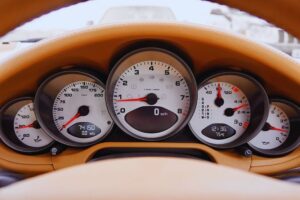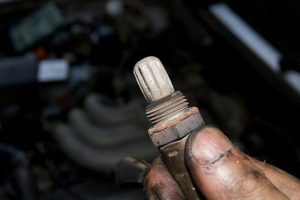The CV joint transfers torque, connecting a car’s transmission to the wheels. It is a driveshaft component, most often present in front-wheel drive vehicles. A common issue is CV joint noise when driving straight or turning. What causes CV joint noise?
Loose joints, faulty boots, poor lubrication, binding, and aging are some of the most common causes of CV joint noise. CV joint noise when driving straight or turning indicates a problem that requires an immediate solution.
Read on to learn more about CV joint noise, including its causes and potential solutions.
CV Joint Noise
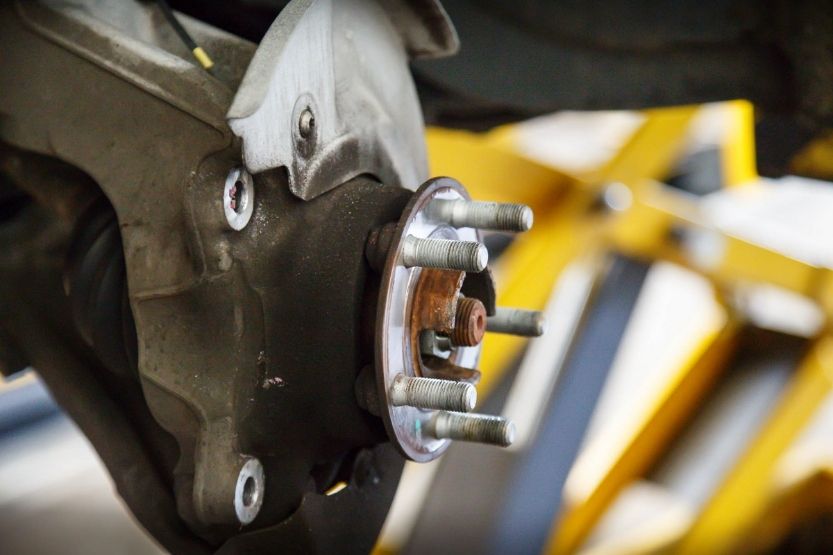
The CV joint’s location and function are prone to failure. It moves up and down continuously under the car, subjecting the components to stress. It is in contact with debris and rocks, among other components that can cause damage.
Depending on the specific problem of the CV joint, the noise exists in different forms. It can be a clicking or popping sound when there is a minor problem. When there is a more serious issue, you can hear a growling noise that takes a while before fading. In many cases, a sudden vibration accompanies the noise.
Before bringing your car to a mechanic, diagnose the problem quickly. Below are some of the most common causes of CV joint noise when driving straight or turning:
1. Loose Joints
Especially when you notice the noise when you are turning, it is because of a loose joint with your car traversing rough roads, the components underneath wobble. As a result, they move from the original position, including the joints. When they unfasten, they become noisy as they move.
2. Faulty Boots
A boot is a flexible rubber cover that protects the joints from water, dirt, and other debris. It is made of a strong material that resists bending. Additionally, it keeps the grease inside to ensure proper lubrication of the joints.
With constant exposure to harsh elements and the use of your car, the boot eventually breaks or cracks. As a result, contaminants get in, which will damage the joints and cause more friction. In turn, the joints will be noisy.
3. Poor Lubrication
Proper lubrication is one of the most important requirements for maintaining the peak performance of CV joints. Without enough lubricant, the CV axle cannot move freely. More so, there will be too much contact and friction. This will result in a noticeable noise when you drive straight or turn.
4. Binding
This problem can be apparent when you open the boot and peek at the axle. As dust and debris get into the joint, they get stuck in the moving components. They bind the axle, restricting the movement or making it impossible to turn. It will be harder for the axle to move, generating noise when you are driving.
5. Aging
Like other components of your vehicles, CV joints wear out over time. Most are durable, but they are not exempt from deterioration. This is especially the case if you often drive on rough roads or in challenging environments. When you hear a loud CV joint noise driving straight or turning, it might be time for a replacement.
What Is a CV Joint?
The CV (constant velocity) joint is a driveshaft that runs from the car’s front differential to its wheels. It got its name because it allows wheels to be moving at a constant velocity, moving along with the vehicle’s suspension. While it is more common in front-wheel drives, you can also find a CV joint in four and rear-wheel drives.
There are two types of CV joints in a drive wheel. The first is an inner joint, which aligns the axle to the transmission. The second is an outer joint, which links the wheel to the axle.
The main function of a CV joint is to transfer power from a car’s transmission to its wheels. After pressing the gas, it makes sure that the wheels turn. Otherwise, car handling and overall performance suffer. When you hear a clunky or loud noise when turning, it is indicative of a problem.
Other Possible CV Joint Issues
Aside from the noise, CV joints are also vulnerable to other problems. Here is a rundown of some of the potential issues:
1. Excessive Vibration
The vibrations are also bothersome than the noise originating from the CV joint. When the CV joint busts, it shakes a lot when the car accelerates. The quicker the acceleration, the more noticeable the vibration is.
Intense vibrations affect balance during the axle’s rotation. Additionally, it also makes it harder to control the car.
2. Tire Grease
The boot of the CV joints holds grease, which provides the necessary lubrication to the moving components. The grease can leak when the axle spins. If you see it leaking on the side of the tire, then it is an obvious sign that the boot has damage.
3. Feeling Bouncy
If you are driving on a smooth and flat road but feel the car bouncing, this is another indication of a CV joint problem. The damage to the CV axle may cause unnecessary movements, making your drive bouncier.
Again, what causes CV joint noise when driving straight or turning? Loose joints, faulty boots, poor lubrication, binding, and aging are some of the most common causes of CV joint noise. CV joint noise is indicative of a problem that requires an immediate solution.
How to Prevent CV Joint Noise
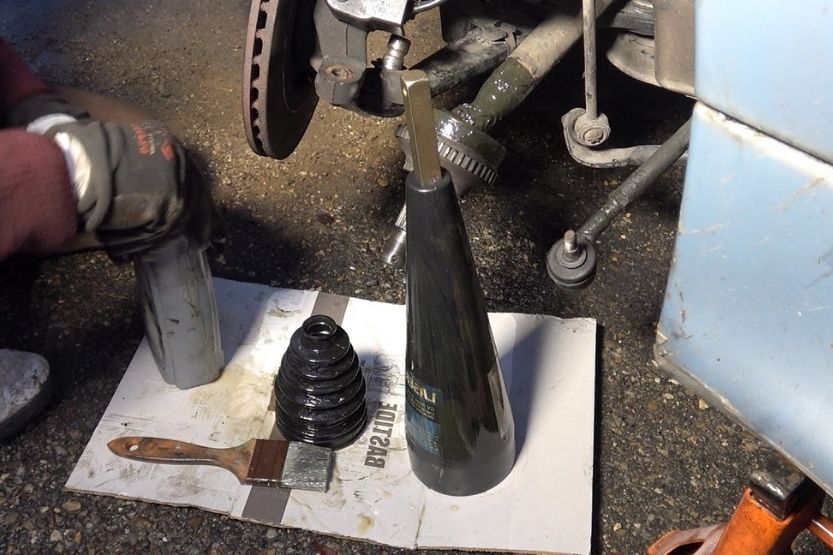
Like with other car problems, prevention is better than cure. That said, below are some of the best things to do to minimize the possibility of joint noise when driving:
1. Change the Boot
As earlier mentioned, damage to the boot is one of the leading causes of noise. A quick inspection will let you confirm if it is indeed the problem. Despite being tough, this rubber breaks over time. In most cases, it will need a replacement after 80,000 miles.
To change the boot, you first cut the old clamp and remove it. After this, remove the inner race from the splines and ultimately take the boot. If the joint does not warrant a replacement, clean it and put the new boot on.
2. Lubricate the Joints
Another quick fix is adding grease or lubricant. This way, you make the connections smoother to minimize surface contact and reduce noise when the components touch each other. The smoother the joints are, the lesser the noise will be.
Use the right lubricants for the CV joints. One of the best is a grease for extreme pressure, which has components for high-load applications. The products should also have excellent stability to keep lubricating the joints even in extreme environments.
3. Replace the CV Joint
Take note that a CV joint is non-repairable. You can repair only the boot, which is the flexible cover. Otherwise, you will need to replace the entire joint assembly, or the vehicle will not accelerate.
Do I Need a New CV Joint?
When there is a noticeable noise, one dilemma confronts most users – should I repair or replace the CV joint? It depends. A simple repair or lubrication might be enough if it is still worth saving. However, in instances of severe damage, the most logical thing to do is to replace it.
Take note that you can only repair only the boot or cover. When the problem is with the actual joint, there is no other option but a replacement. Otherwise, the car will not accelerate since no torque transfers to the wheels.
Inspect the CV joint to determine the extent of the problem. If the boot has cracks and other visible damages, clean it. If it is beyond saving, replace it. Open the boot and check the joint. When damages start being apparent, you will need a new one.
Should I Replace Both Joints?
As I mentioned earlier, your car can have more than one CV joint. When there is damage to one joint, it does not necessarily mean that you have to replace all of them. You only need a replacement for whichever is showing signs of damage.
How Long Does a CV Joint Last
Factors like the quality of the joint and the driving conditions will impact the service life of the CV joints. Typically, it can last up to 180,000 miles. Choose high-quality joints so they will last longer.
Nonetheless, you do not need to wait for a car to reach 180,000 miles before replacing the joints. Pay attention to problems like noise and the presence of tire grease to know if it is already due for a replacement.
Signs That You Need a CV Joint Replacement
Clueless if your car needs a CV joint? Here are the things you should do to help you decide:
- The best thing to do is to have a quick inspection;
- Go beyond the boot to check;
- Inspect it from every angle;
- Pay attention to signs of heavy rust and corrosion; and
- Listen to the sound of your car as it turns.
Cost of CV Joint Replacement
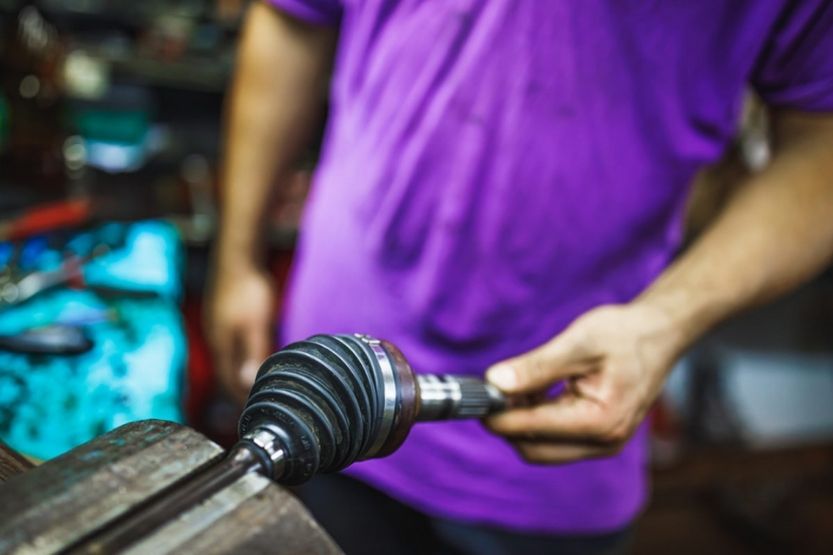
Similar to other car parts, the cost varies. It depends on the specific brand and quality of the component you will use. It is anywhere from $200 to $600 for one joint in most instances. You don’t need to replace all joints.
Cheaper CV joints are available, including those as low as $50. Nonetheless, there are often non-OEM components. They often have inferior quality, so we do not recommend them. Instead, we suggest that you consider it a long-term investment and use one with the highest possible quality.
Aside from the price of the CV joint, you also have to factor in the labor costs. This will depend on how much a mechanic charges. It can range from $150 to $800. The rarer and the older the car is, the most expensive the labor will be.
Can I Replace a CV Joint Myself?
To save money, some people choose to take the DIY route. While this is a good thing to minimize the costs of CV joint replacement, it is advisable only if you have the knowledge and experience. Otherwise, it is best to leave the job to the pros who know better than you. It is quite labor-intensive, so you will benefit from hiring a mechanic.
CV Joint Care and Maintenance
Proper maintenance is crucial to prolong the functional life of the CV joints and prevent noise when driving straight or turning. Below are some of the best things to do to maintain the joint in its peak condition:
- Inspect and clean the CV boot. Jack the car up so you can see the components better. The best way to prevent damage to the joint itself is to protect the boot. Prevent any structural damage to the boot.
- Regularly lubricate the axle or the joints. The grease is important to keep the parts moving smoothly. With too much friction, the component is more susceptible to damage.
- Avoid traversing bumpy or rocky terrains if your car is not designed for off-road driving. It increases wear and tears to the boot, exposing and damaging the joint.
- Consult with a mechanic when you hear a loud and unusual sound when driving straight or turning. Their professional knowledge will help you address the problem before it worsens while also having a safer driving experience.
Conclusion – CV Joint Noise [When Driving Straight or Turning]
The CV joint is one of the most crucial components of your car. It connects the transmission and wheels, generating the necessary torque to power your vehicle. With constant use and exposure to external elements, it experiences several problems, and one of the most common is a loud sound.
There are many reasons why your CV joint is making a loud noise. The most common are loose joints, damaged boots, lack of lubrication, and old age. The potential solutions to the problem include adding a lubricant, changing the CV boot, or replacing the CV joint itself.
When there is damage to the CV joint, it is non-repairable. You can fix the boot or the cover but not the joint itself. It will need a replacement to restore its peak performance and eliminate noise when driving.
Related reading:
CV Axle Replacement, Cost to Replace, Symptoms, and Puller Tools

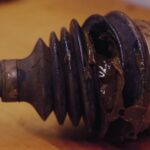

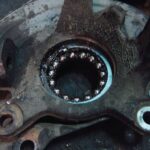
![Clicking Noise When Turning [Causes and How to Fix] clicking noise when turning](https://roadsumo.com/wp-content/uploads/2022/12/clicking-noise-when-turning-150x150.jpg)
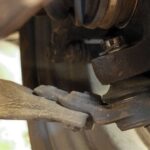

![Read more about the article What Is the Front of a Car Called? [All About the Front]](https://roadsumo.com/wp-content/uploads/2022/05/what-is-the-front-of-a-car-called-300x200.jpg)
